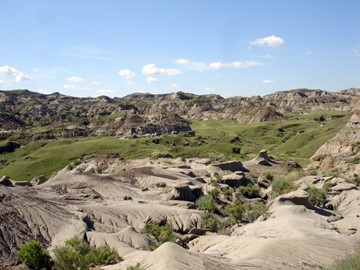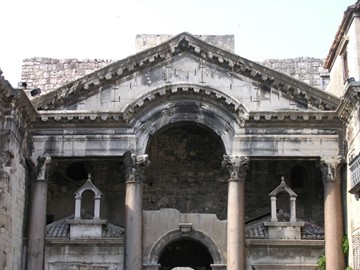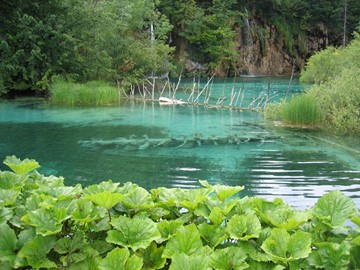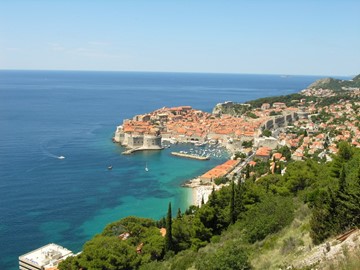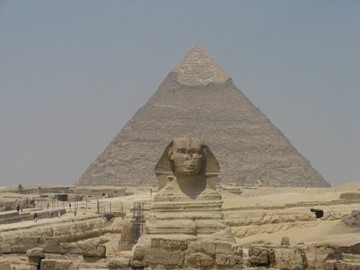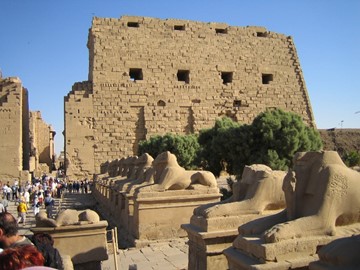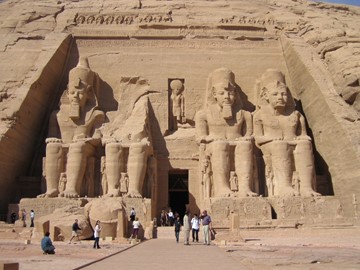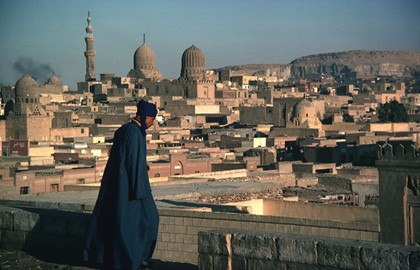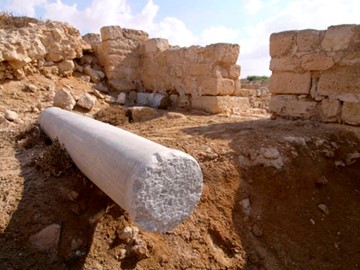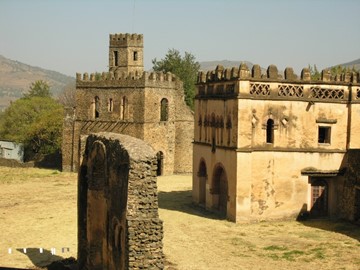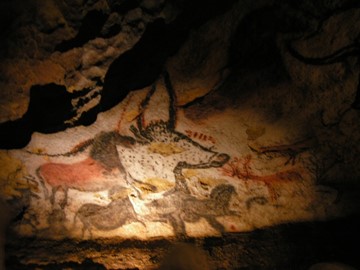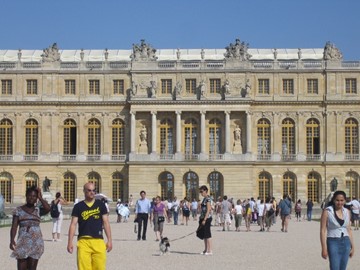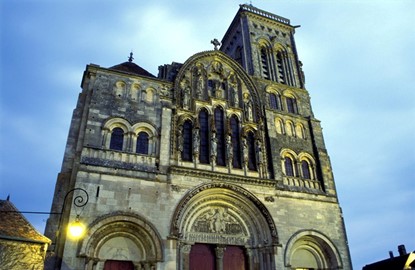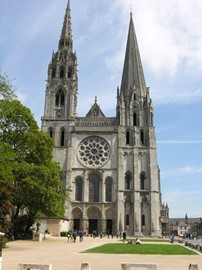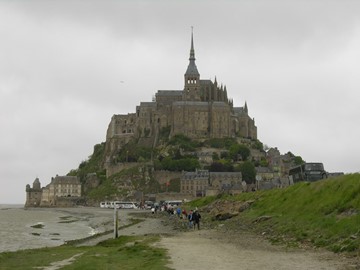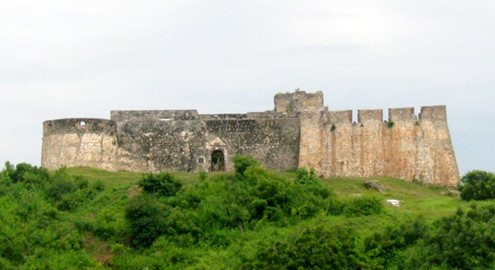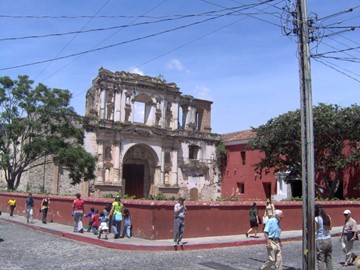search
Dinosaur Provincial Park
Dinosaur Provincial Park, a UNESCO World Heritage site in Canada, is a fossil-rich badland celebrated for its extraordinary paleontological significance. Home to one of the world’s densest concentrations of Cretaceous dinosaur remains, it features striking eroded landscapes and over 150 documented species, offering a window into prehistoric life 75 million years ago. Recognized for its scientific and natural value, it stands as a global treasure of Earth’s ancient past.
Split
Split, a UNESCO World Heritage site in Croatia, is renowned for its historic architecture centered around Diocletian's Palace, a remarkably preserved Roman imperial complex. Combining ancient ruins with medieval and modern structures, it reflects centuries of cultural evolution, offering a unique blend of historical significance and urban vibrancy.
Plitvice Lakes
Plitvice Lakes, a UNESCO World Heritage site in Croatia, is a breathtaking natural wonder known for its cascading lakes and waterfalls interconnected by pristine waterways. Surrounded by lush forests, this unique landscape supports diverse ecosystems and offers stunning views, showcasing harmony between natural beauty and ecological significance.
Dubrovnik
The Old City of Dubrovnik, a UNESCO World Heritage site in Croatia, is a stunning medieval walled city renowned for its well-preserved architecture and historic charm. Encircled by massive stone walls, it features narrow cobblestone streets, Gothic and Renaissance buildings, and cultural landmarks that reflect centuries of maritime trade and artistic heritage.
Virunga
Virunga National Park, a UNESCO World Heritage site in Congo, is a biodiverse wilderness spanning volcanoes, forests, and savannas. Home to rare mountain gorillas, elephants, and okapis, it showcases a stunning range of ecosystems and wildlife. This natural treasure highlights conservation efforts amidst a dramatic and varied landscape.
Memphis and its Necropolis
Memphis and its Necropolis, a UNESCO World Heritage site in Egypt, is an ancient capital from 3100 BCE, renowned for its vast burial grounds and monumental pyramids. Featuring the Great Sphinx and Giza’s iconic structures, it reflects the architectural genius and spiritual beliefs of early Egyptian civilization. This historic site offers a profound glimpse into antiquity’s grandeur.
Thebes Necropolis
The Thebes Necropolis, a UNESCO World Heritage site in Egypt, is an ancient burial ground from the New Kingdom era, famed for its rock-cut tombs and temples. Featuring the Valley of the Kings and grand mortuary complexes, it showcases intricate art and royal burials. This site offers a stunning window into Egypt’s pharaonic heritage.
Abu Simbel Nubian Monuments
The Abu Simbel Nubian Monuments, a UNESCO World Heritage site in Egypt, are colossal 13th-century BCE temples carved into a cliff by Ramses II. Featuring massive statues and intricate reliefs, they were relocated in the 1960s to save them from flooding. This site showcases ancient Egyptian engineering and royal legacy.
Cairo
Historic Cairo, a UNESCO World Heritage site in Egypt, is a medieval Islamic city founded in the 10th century, renowned for its mosques, madrasas, and bustling bazaars. Featuring ornate minarets and ancient walls, it reflects centuries of architectural and cultural evolution. This vibrant site offers a rich tapestry of Egypt’s Islamic heritage.
Abu Mena
Abu Mena, a UNESCO World Heritage site in Egypt, is an early Christian pilgrimage center from the 4th century, featuring ruins of a basilica, monastery, and baptistery. Built over the tomb of Saint Menas, its intricate remains reflect the rise of Coptic Christianity. This archaeological site offers a glimpse into Egypt’s religious past.
Fasil Ghebbi
Fasil Ghebbi, a UNESCO World Heritage site in Ethiopia, is a 17th-century royal fortress-city with palaces, castles, and churches encircled by stone walls. Reflecting a blend of Ethiopian and imported architectural styles, it served as an imperial capital. This site showcases Ethiopia’s historical grandeur and cultural legacy.
Vézère Valley
The Vézère Valley, a UNESCO World Heritage site in France, is a prehistoric treasure trove featuring over 150 Paleolithic sites from 400,000 years ago. Renowned for cave art, including the famous Lascaux paintings of animals, it offers a vivid glimpse into early human creativity. This site showcases France’s ancient cultural legacy.
Versailles
The Palace of Versailles, a UNESCO World Heritage site in France, is a grand palace and gardens epitomizing 17th-century royal extravagance. Built under Louis XIV, its opulent halls, like the Hall of Mirrors, showcase Baroque architecture and lavish decor. The sprawling gardens feature fountains, sculptures, and manicured lawns, reflecting meticulous design. Once a political hub, it symbolizes absolute monarchy’s power and prestige. This iconic site blends history, art, and nature in stunning harmony.
Vézelay
Vézelay, a UNESCO World Heritage site in France, is a medieval hilltop village centered around the Basilica of Saint Mary Magdalene. This Romanesque masterpiece, built in the 12th century, features intricate carvings and a soaring nave, drawing pilgrims for centuries. The site served as a key starting point for Crusades and Santiago de Compostela pilgrimages. Its well-preserved streets and panoramic views enhance its historic charm. Vézelay reflects a rich blend of spiritual significance and architectural b... Read More
Chartres Cathedral
Chartres Cathedral, a UNESCO World Heritage site in France, is a masterpiece of Gothic architecture from the 12th and 13th centuries. Renowned for its soaring towers and intricate stone carvings, it stands as a testament to medieval craftsmanship. The cathedral’s vibrant stained-glass windows, depicting biblical scenes, are among the world’s finest. Its well-preserved structure reflects the era’s religious devotion and artistic innovation. This iconic site draws visitors to explore its historical and spirit... Read More
Mont Saint Michel
Mont-Saint-Michel, a UNESCO World Heritage site in France, is a medieval island fortress rising dramatically from the sea. Built atop a rocky mount, its abbey and winding streets reflect centuries of architectural ingenuity. Once a pilgrimage site, it blends Gothic and Romanesque styles seamlessly. Surrounded by shifting tides, it creates a striking silhouette against the horizon. This historic marvel showcases a unique harmony of nature and human creation.
Forts and Castles of Ghana
The Forts and Castles of Ghana, a UNESCO World Heritage site, comprise a collection of historic fortifications built between the 15th and 18th centuries by European traders and colonial powers. These structures, originally established for trade in gold and later used in the transatlantic slave trade, reflect a unique blend of European and African architectural influences. Key examples include Elmina Castle and Cape Coast Castle, which served as major hubs for commerce and human trafficking. Today, they stan... Read More
Tikal
Tikal, a UNESCO World Heritage site in Guatemala, is an ancient Mayan city renowned for its impressive pyramids, temples, and palaces that showcase the architectural and cultural achievements of the Maya civilization. Flourishing between 200 and 900 AD, it served as a major political, economic, and religious center, with iconic structures like Temple I and the Great Plaza standing as testaments to its historical significance. Today, Tikal offers a glimpse into the past, drawing visitors to explore its well-... Read More
Antigua Guatemala
Antigua, the capital of the Captaincy-General of Guatemala, was founded in the early 16th century. Built 1,500 m above sea-level, in an earthquake-prone region, it was largely destroyed by an earthquake in 1773 but its principal monuments are still preserved as ruins. In the space of under three centuries the city, which was built on a grid pattern inspired by the Italian Renaissance, acquired a number of superb monuments.
Tchogha Zanbil
Tchogha Zanbil, a UNESCO World Heritage site in Iran, is an exceptionally well-preserved ancient Elamite complex dating back to around 1250 BCE. Built by King Untash-Napirisha, it features a massive ziggurat, originally five stories tall, dedicated to the god Inshushinak. The site includes temples, palaces, and intricate brickwork, showcasing advanced engineering and religious significance of the Elamite civilization.
Persepolis
Persepolis, a UNESCO World Heritage site in Iran, is an ancient ceremonial capital of the Achaemenid Empire, founded by Darius I in the 6th century BCE. Renowned for its grand palaces, intricate bas-reliefs, and monumental staircases, it exemplifies Persian architecture and artistry. The site served as a symbol of imperial power until its destruction by Alexander the Great in 330 BCE. Today, its well-preserved ruins offer valuable insights into the history and culture of one of the world’s earliest empires.... Read More
Meidan Emam
Meidan Emam, a UNESCO World Heritage site in Esfahan, Iran, is a stunning example of Persian architecture and urban planning from the Safavid era. This grand public square, constructed between 1598 and 1629 under Shah Abbas I, features intricate tile work, majestic mosques, and a harmonious layout that reflects the cultural and artistic achievements of its time. Key landmarks include the Sheikh Lotfollah Mosque, the Imam Mosque, and the Ali Qapu Palace, all showcasing exquisite design and historical signifi... Read More
Rock Drawings in Valcamonica
The Rock Drawings in Valcamonica, a UNESCO World Heritage site in Italy, represent one of the world’s largest collections of prehistoric rock art. Spanning over 8,000 years, these engravings—etched into rock surfaces—depict scenes of hunting, farming, rituals, and daily life, offering a window into ancient human culture. This vast open-air gallery highlights the artistic and historical evolution of early societies in a striking natural setting.
Kotor
Kotor, a UNESCO World Heritage site in Montenegro, is a well-preserved medieval town nestled at the head of a stunning bay. Its historic old town features a maze of narrow cobblestone streets, ancient churches, and fortified walls that climb the surrounding hills. Founded in the 5th century, Kotor showcases a blend of Roman, Byzantine, and Venetian influences, evident in its architecture and cultural heritage. Today, it stands as a testament to its rich history, attracting visitors with its picturesque char... Read More
Sagarmatha
Sagarmatha National Park, a UNESCO World Heritage site in Nepal, is renowned for its stunning Himalayan landscape, including the world’s highest peak, Mount Everest. Established in 1976, the park protects a diverse ecosystem of rare flora and fauna, such as snow leopards and Himalayan tahrs, alongside unique Sherpa culture and sacred monasteries. It serves as a critical conservation area and a global symbol of natural beauty and biodiversity.
